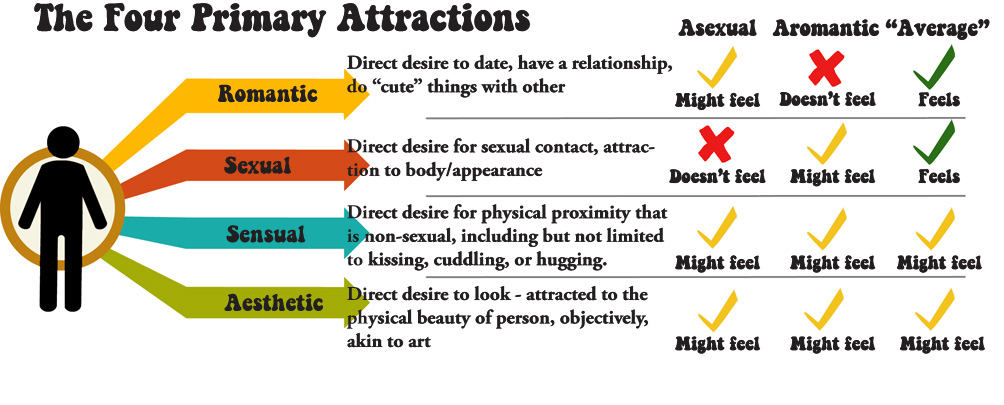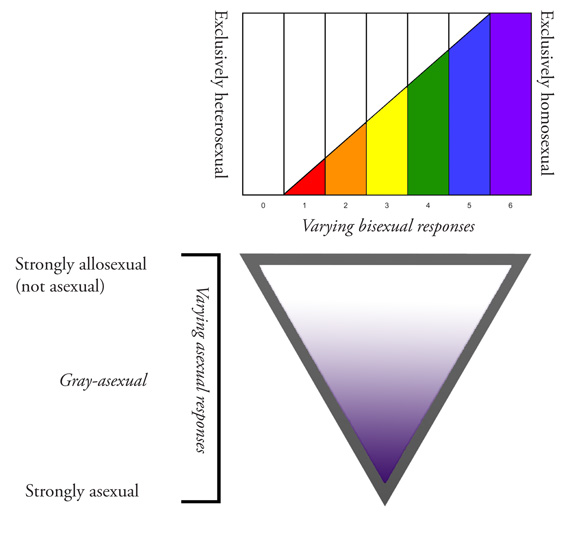
There are several reasons why Daryl is among the most popular characters in the AMC television series The Walking Dead’: He’s brave, he carries a mean crossbow, and according to his fanbase, he’s incredibly attractive. Some viewers bring up an ironic point, though: his more-than-platonic relationship with Carol and sexless persona may mean something more than a drawn-out romantic plotline: he may be asexual.
You read that correctly. Asexual. Most commonly referred to as the means by which plants reproduce, this term has a variety of applications in science and biology. It is also the sexual orientation of not being attracted to any gender.
What does this mean? The ambiguity is on purpose. While some asexuals are disgusted with sex and intimacy, others are indifferent or even fascinated by it. Some choose to be in a romantic relationship while other asexuals avoid it at all costs. It is hard to capture the experience in one story, but as education grows, it is becoming an important perspective within the LGBTQ+ community.
A survey ran by the Asexual Visibility and Education Network found that about 1% of people, when asked of their sexual orientation, opted to select “none of the above.” Considering that asexuality is still an unknown, we can expect this number to rise as the public grasps this concept. If this statistic is accurate, there are a few dozen at Malden High School who probably don’t know it yet.
Granted, it is difficult to define sexuality alone – for many, it’s not as simple as choosing to open a “male” or “female” door, or even accounting for who is “good-looking.” While we are thankfully supported by an upstanding guidance and adjustment staff at Malden High, we lack an all-inclusive education about sexuality and gender, which are some of the most common triggers for identity crises and household issues. For many, it begins in high school.

In its purest form, what sexual orientation consists of is a gut-feeling, automatic reaction to a certain body form, and it does not exist in millions of DNA. It is called sexual attraction. Those who feel sexual attraction may not be able to explain it, but they know what it feels like. It has been described as a “hunger,” a “burning” when placed in proximity with another person. It tends to be a distracting, unavoidable thought when triggered by the object of desire.
Anonymous Malden High students have described sexual attraction as “wanting an extra level of intimacy, a deeper level to explore a person.” Positive descriptions call it “exhilarating” while others say it is a “pain” when one cannot act on their feelings.
Meanwhile, there are other forms of attraction that those who do not feel attraction compensate for, and they are often mistaken for sexual attraction. Thinking someone looks nice, pretty, or even “sexy” can exist without a “hunger” for them. (Most famously is the chant of the heterosexual man: “I’m not gay, but he is a handsome dude.”) Some people enjoy “sensual acts” like kissing, hugging, and cuddling without having sexual desire for them.
Most importantly, many people have feelings, crushes, and romantic relationships with other people of all genders without sexual attraction ever crossing their mind.
It’s important to think of this as a spectrum. While most asexuals have never felt sexual attraction, some feel it in specific or rare circumstances but consider it a negligible factor in their lives. These people are referred to as “gray-asexuals,” as to say they are in the “gray area” between being asexual and otherwise. Also, many asexuals (and non-asexuals) identify as aromantic, meaning they do not feel the desire to develop a romantic relationship that the average person crosses in their life. This is not exclusive to asexuality but it is possibly more common in general, putting average people who are disinterested in romantic relationships on the spectrum. Any combination of attitudes can exist on physical intimacy, romantic relationships, the beauty of other people, and sexual attraction.

Like all orientations, it is not an active choice to be asexual – unlike celibacy or abstinence, which is the deliberate self-restraint of sex. It is a combination of biological and environmental factors that shape one’s identity. The only choice that exists is whether the subject accepts his or herself or decides to come out.
The real struggle for many asexuals is reaching a level of acceptance for their own identity. “Sexual behavior is normalized in society, which can be a burden on people on the ace spectrum who feel like they are forced to have or want sex in order to be ‘normal’,” says officer of the Gay-Straight Alliance (GSA) and junior Shannon Kilduff.
Hence why asexuals have often used the term “broken” to describe themselves before finding out asexuality is a common and normal trait. Surveys taken by those who identify as asexual frequently report to have considered or attempted suicide – as many as 70% in some. As these statistics are only conducted by AVEN and smaller sites, this could be a wild overestimation – still, it forces one to take seriously the impact of not “fitting in” with the status quo.
It can be hard for an asexual to fit in with his or her society in a world that is sex-obsessed and centered around repopulation rituals and finding one true love, but it has its perks, too. Many asexuals, like Lord Verys from the HBO TV series Game of Thrones, see themselves as objective figures focused on their own goals than the wonders of the human body. In truth, it is not a blessing nor a curse to be asexual – it is an experience that wields hundreds of emotions across the board, from disgust or indifference to passion and a desire to forge lifelong friendships.
“Being gay is no longer the minority,” Kilduff continues. “[The GSA] is so much more than gays and allies… there are a lot of valid identities that need to be addressed.”
Critics of asexuality say that it is a “special snowflake” term that makes average people seem oppressed, but this thinking invalidates the experiences of millions of people who have felt this way. In any case, asexuals do not often claim to be directly persecuted – many only ask that their feelings and lifestyles are accepted by their loved ones. The true adversity they face is when people erase asexuality from discussion by claiming it is not real or acceptable, creating a toxic environment for those who are attempting to make a valid identity for themselves.
But why do we need all these labels? A valid question. A word can never describe someone perfectly, and even if it does, it may not stay that way forever. My answer to this question has always been this: Sexual orientations are not “labels.” They are communities. They are words to associate a group of people with similar experiences to make them feel more secure in their identity.
It is true; no one “needs” labels. But people do need assurance. If you know someone who might be asexual, or suspect it of yourself, visit AVEN.org or visit Malden High’s GSA, which has resources on asexuality, bisexuality, gender identity and more.





Thank you for sharing this article!! <3 <3 <3 =-D